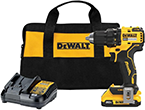Emergency pipe repair work is something that every homeowner should understand and learn. This way they can help prevent additional costs associated with a bad pipe, or plumbing work. By following these simple directions, you can easily repair many kinds of leaks that you can find in your home.
- Identify the leak. Before you can do any type of repair work, you need to identify where the problem lies. This should be rather simple since it will be the area that has the water gushing out of it. If the leak is behind walls, look for an area of your wall that is showing water damage.
- Shut off the water. Once you have identified where the leak is, turn the water off. Ideally, you should only have to go to the water main in your home, and turn it off. However, if you can't find it, you can also turn the water off from the main at the street. At this time, if you need to and you haven't already, remove any drywall between you and where the leak is located.
- Place a patch. Take a good look at the pipe, and see how much of a crack is, and then locate an old garden hose. Cut a piece of hose that is at least as long as the crack in the pipe, and at least 1/4 inch longer on each side of the crack. Cut a straight line lengthwise down the short piece of rubber hose, and then place this patch over the crack in the pipe.
- Use some clamps. Get some hose clamps, at least three or four, and space them out evenly along the patch. Tighten these clamps until the patch is nice and snug. You can easily tell when this happens by seeing the rubber of the hose dimple in slightly.
- Test your work. After you have placed the patch on the crack, and tightened the clamps, turn the water back on. You may want to have a friend standing near the damaged pipe to tell you if there is any noticeable water. If you di the work right, you should not see any drips or leaks. That being said, you will still want to limit your water use as much as possible until the plumber can come and fix the problem. In the event that there is a slight leak, tighten the hose clamps some more until the leak stops.
- Call the plumber. With the repair work finished, you should call your plumber. If you don't already have one on speed dial, take the extra time you now have and call around for one.
Once you have finished testing your work, and have called the plumber, you really only have one thing left to do—clean up. Take the time available while you are waiting for the plumber to arrive to clean up as much of the mess as possible. After all, while the plumber may be able to repair the pipes, they won't exactly clean up the mess that the bad pipes left behind.
Author Bio
Lee Wyatt
Contributor of numerous Tips.Net articles, Lee Wyatt is quickly becoming a regular "Jack of all trades." He is currently an independent contractor specializing in writing and editing. Contact him today for all of your writing and editing needs! Click here to contact. Learn more about Lee...
Driving on Snow
Snow can be a major hazard, particularly when you are driving. Here are some simple ways that you can reduce the risk ...
Discover More
Refinishing Bathroom Cabinets
The next time you are in the mood for remodeling your bathroom, look into refinishing instead. Refinishing bathroom ...
Discover More
Can Moss Kill a Tree?
Finding moss on your trees can very easily leave a homeowner confused and worried. After all while it may look ...
Discover More
More Home Improvement Tips
Installing a Pop-Up Drain
If you haven't already got a pop-up drain in your bathroom sink, then you need to think about installing one. Installing ...
Discover More
Installing a Wall-Hung Sink
If you don't like the current sink in your bathroom, you can always go with a traditional favorite, the wall-hung sink. ...
Discover More
How to Read Your Water Meter
Have you ever wondered how to read your water meter? Well, it's not all that difficult, and you can even track your own ...
Discover More

Comments